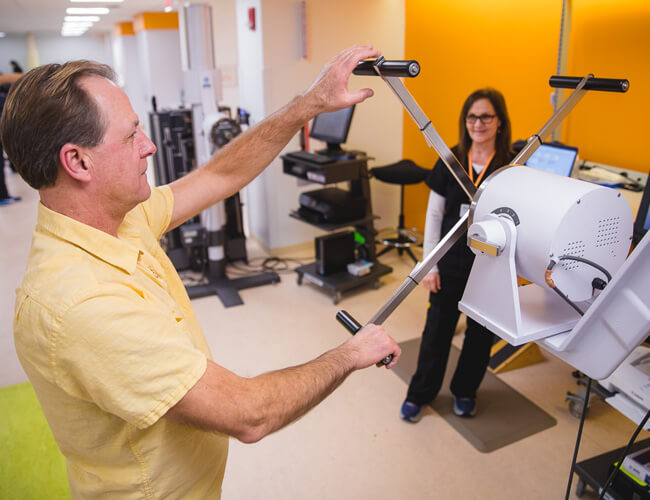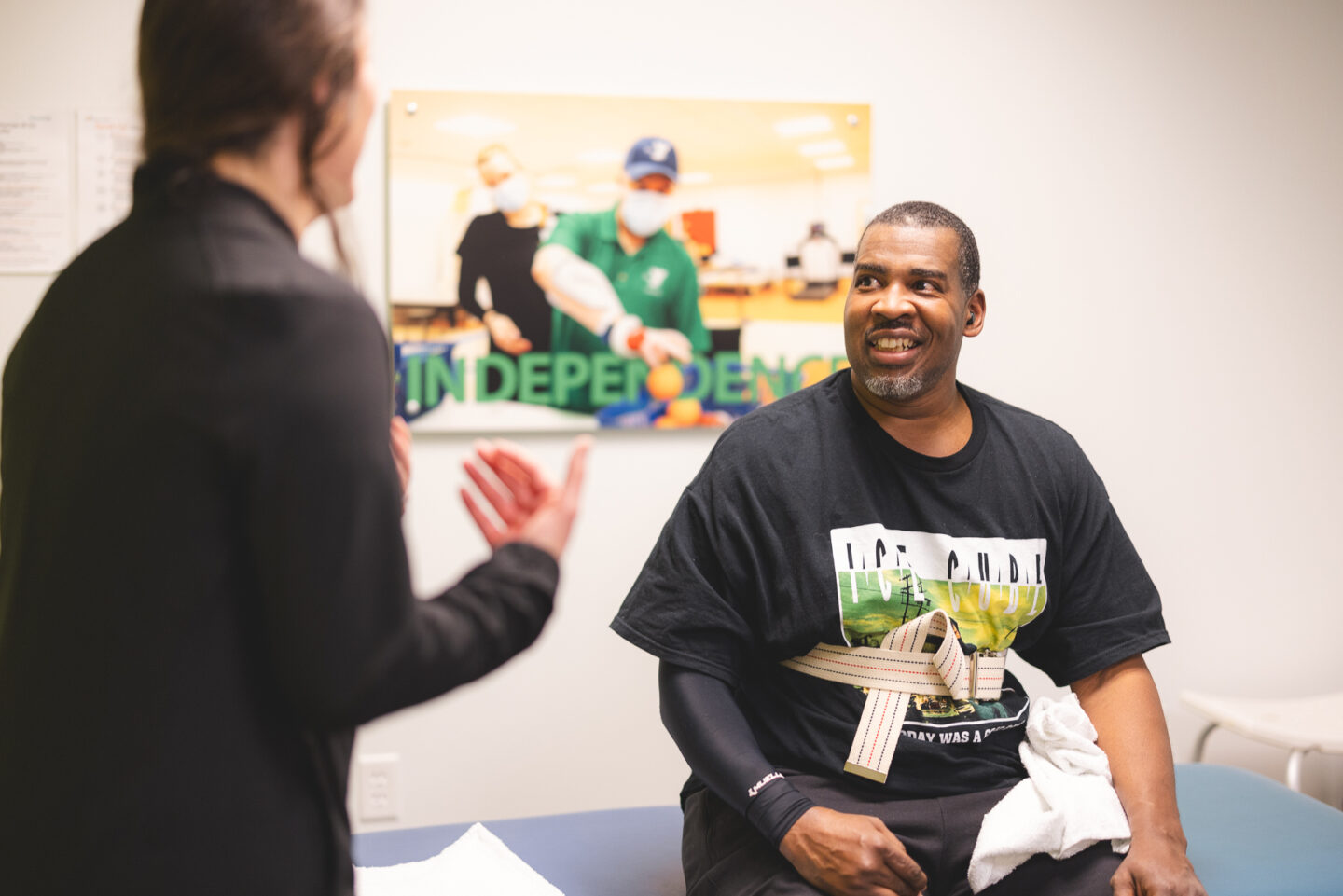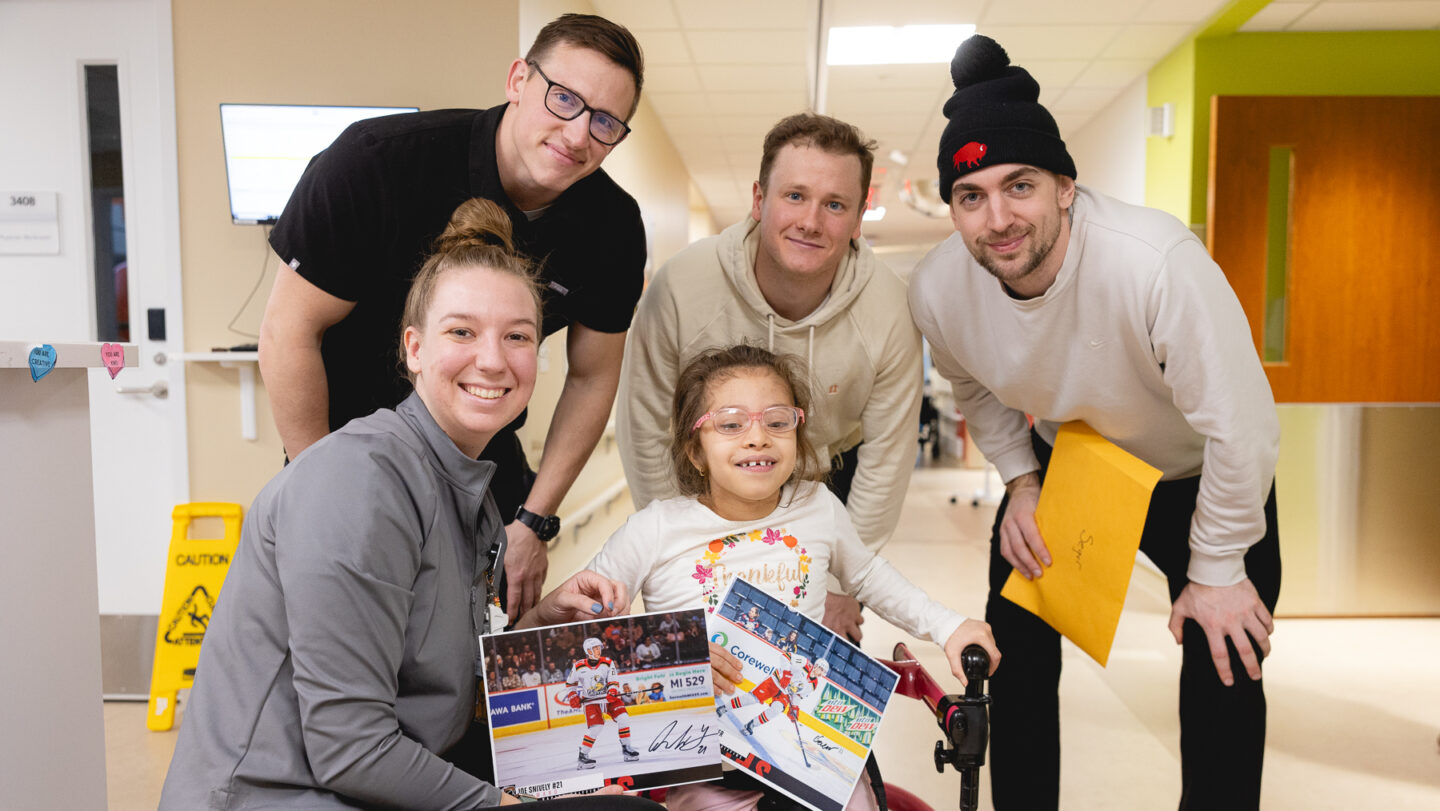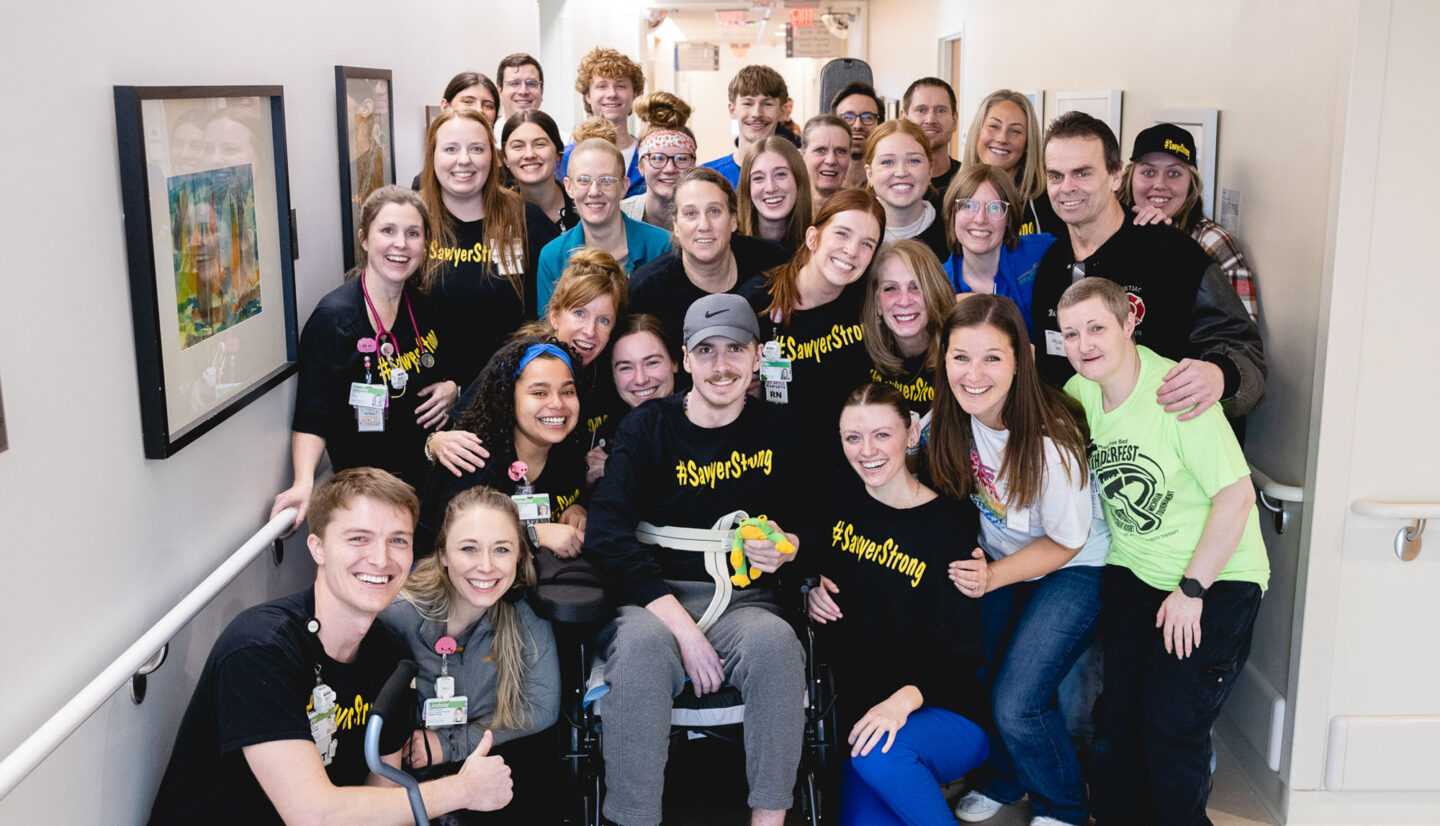Posted on January 22, 2019
Living with chronic pain: Pain rehabilitation and graded exposure to activity
Guest blog: Nicole DeHaan is a physical therapist and therapeutic pain specialist in Mary Free Bed’s Pain Rehabilitation Program. As a member of the program’s team of experts, she works with patients to reduce their chronic pain and improve their ability to function.
In this blog, Nicole discusses the benefits of graded exposure to activity, one of the program’s comprehensive pain management strategies.
We get it: Pain hurts. It hurts to even move. When you suffer with chronic pain, fear of movement and the anxiety it creates can be disabling.
At the Pain Rehabilitation Program at Mary Free Bed, we help people with chronic pain return to doing the things they value most. Our goal is to reduce your pain, improve your ability to function and provide comprehensive pain management strategies. One way is through graded exposure to activity.
When we discuss activity level, we start by explaining a couple of scenarios.
Some people will have a day when they feel better and do everything on their “to do” list, because they don’t know how they’ll feel tomorrow. However, this sets them up to have a tough day tomorrow because of everything they did today. They may rest for three or four days to recover from their very productive day. When they feel better, they try to do everything again. We call this a “boom-bust” pattern of activity.
In contrast, some people don’t want to experience any pain, so they rarely move. But in this case, the system adapts to the lower activity level, and, over time, they start to feel pain at that level, too. This pattern continues until they’re unable to do any activities without experiencing pain.
Finding a Different Approach to Chronic Pain
Neither of these options is ideal nor do they help improve function. We suggest a different approach to better improve your tolerance of new activities or things you already do but not as often as you’d like. Try being active at a level that causes a short-term increase in discomfort, but not so much so that you’re unable to do anything else the rest of the day. Think of it like weight training. When you lift weights, you expect your muscles to be a little sore the next day – this is necessary to become stronger. But you should still be able to go about your routine without difficulty.
As you begin to slowly “challenge” your system, you’ll be able to tolerate more activity than before with the same amount of discomfort. It’s like adjusting weight with resistance training; as you increase weight, the soreness you feel after strengthening is similar to before, but you’re lifting more weight.
Keep in mind, change doesn’t happen overnight. If it’s been months or years since you’ve done an activity, understand that it may take just as long to get back to where you want to be. It will take time.
The exciting part is that the system can change. With the right balance of activity challenge and consistency, you can make your way back to doing the things you love.
For more information about the Mary Free Bed Pain Rehabilitation Program, call 616.840.8684. The program also is available in Holland and Kalamazoo.






